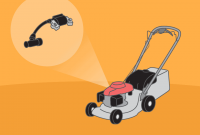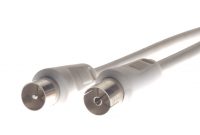A “3-wire” 220v line, has 2 insulated copper wires and 1 bare copper wire. A “4-wire” 220v line would have 3 insulated copper conductors and 1 bare copper conductor.
Difference between 3 wire and 4 wire?
In a 3-wire 220v line, the two insulated wires each carry power to the appliance. These should be coloured black and red. This type of wire would be used to power for example an electric water heater. Because a 220v load does not need a neutral (white) wire to work, only 2 conductor wires are used with this application.
A 4-wire 220v line is used for appliances such as stoves and clothes dryers. A 4-wire line has 2 insulated power wires (red and black), one neutral wire (white) and a bare ground wire.
An appliance such as a clothes dryer actually has a mix of 220v and 110v circuits. Although the 220v circuit doesn’t need a neutral wire to work, the 110v circuit does need the neutral (white) wire.
This is why on some appliances a “3-wire” is all that’s needed and for other appliances a “4-wire” is required. As far as converting this arrangement, a new “4-wire” should be installed from the panel replacing the “3-wire” arrangement. Consulting a licensed electrician for this is highly recommended.
Modern 4-Wire Appliances with 3-Wire Cords
It is considered Code-compliant for the kitchen range or the clothes dryer to be installed using a 3-wire cord and plug in an existing installation (such as an older home constructed in the 1950s). Kitchen ranges and clothes dryers, on the other hand, require a 4-wire cord and plug when installed in a new building.
The equipment grounding conductor is the fourth wire in that cord and plug configuration. In older 3-wire setups, this equipment grounding conductor is the missing wire.
The wiring consisted of two hot wires and a neutral wire in these older appliance installations where 3-wire cords were legally installed.
The two hot wires supplied both phases, which were 180 degrees out of phase from one another, to handle the range or dryer’s large electrical load, and the neutral wire served as a return path for any 120-Volt loads incorporated into the 240-Volt range or dryer, such as the built-in light or timer.
(Note: Clocks, timers, lamps, LED displays, and other small loads that are part of kitchen ranges and clothes dryers are commonly 120 Volts, even on 240 Volt ranges and dryers.) As a result, they need a neutral as a return path for the 120 Volt current.)
The neutral served two purposes in the older 3-wire cord and plug setup:
- It carried the return current back to the source for the aforementioned 120 Volt appliance loads, and
- It was connected to the metal frame and metal housing of that same appliance, causing the circuit-breaker at the panel to trip in the event of a short to ground condition. The circuit-breaker protecting the appliance would not trip during a short to ground condition if the Neutral in that 3-wire configuration was not connected to the metal frame and housing of the appliance.
For example, if a hot wire inside a clothes dryer became detached from the heater element due to vibration and made contact with the dryer’s metal housing, the metal housing would become energized and would remain energized indefinitely, as long as there was no route for the shorted current to return to its source.
If someone came into contact with this energized metal while grounded, such as a person with bare feet on a basement floor, they would almost certainly be shocked.
The takeaway here is that without a return path for current to flow, which is connected to an appliance’s exposed metal, any voltage applied to that metal during a fault condition will simply stay on that metal. That’s why, even in 3-wire cord configurations, the neutral wire was attached to the exposed metal as a return path.
The equipment grounding conductor in the 4-wire cord and plug configuration now performs one of the functions previously performed by the neutral in the old 3-wire setup.
The equipment grounding conductor is now the conductor attached to the appliance’s metal frame and housing. During a short to ground condition, it is solely responsible for bringing back any fault current on that metal. The neutral in that cord is no longer connected to the metal frame and housing, and it can’t be because the NEC forbids it during new construction.
Because it was determined long ago that attaching exposed metal of an appliance to a neutral conductor that is carrying current is a bad idea, the neutral wire of an appliance is no longer allowed to carry fault current back to the source (which means it can no longer be attached to the metal frame and housing of an appliance).
Under the right conditions, such as a homeowner standing barefoot on a wet basement floor, that moving current on the exposed metal of that appliance may just briefly decide that a human being in contact with that exposed metal is that path of least resistance back to its source.

How do you connect 4 wires to 3 wires?
Two 120-volt circuits are connected to one 240-volt line by connecting a 4-wire and a 3-wire circuit at a junction box.
This is the most common configuration for large lighting arrays. Using a single 240-volt line to power multiple 120-volt circuits cuts down on the amount of wire and circuit breakers required in the main power panel.
A red wire, black wire, white wire, and ground wire make up a 4-wire circuit. Green or bare ground wires are all acceptable options (without insulation).
The only wires in a 3-wire circuit are black, white, and ground.


